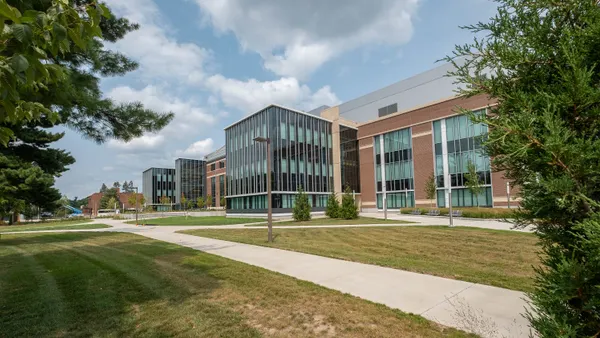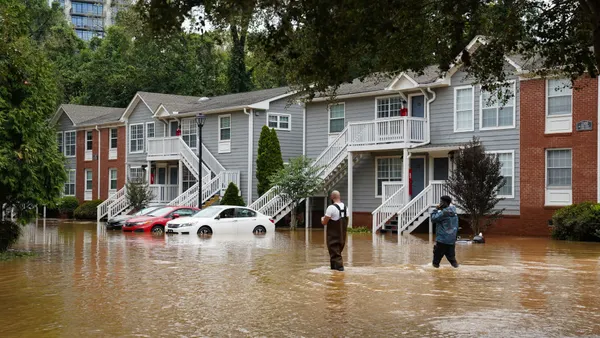Dive Brief:
- Kansas City, MO, developers are preparing to break ground on what they say will be the nation's largest multifamily apartment complex to use a construction system certified by the Passive House Institute — which calls for energy-efficient standards that are even stricter than LEED standards.
- Second and Delaware, a 276-unit, two-building complex on the Missouri riverfront that the Kansas City Star calls "precedent-setting," is predicted to cost $60 million and to break ground in October.
- The development will include 16-inch-thick concrete walls, rooftop gardens, and "an energy recovery ventilation system that reduces heating needs in the winter and cooling needs in the summer by about 90% from comparable-sized apartments," according to the Kansas City Star.
Dive Insight:
Large Passive House-certified complexes are more common in Europe, but have yet to catch on in the U.S. A Natural Resources Defense Council director told the Kansas City Star he expects the Second and Delaware project to draw national attention to the city "much like Google Fiber did when it came to Kansas City first. People will talk about it, show it off. It will be the first of a kind in the country in terms of bringing this passive technology to large apartment building."
Developers have said they are also employing lean construction techniques to reduce costs and delays. The project will involve concrete panel walls with insulation between the two panels. This method is touted as a more durable alternative to wood-frame construction, as it can endure harsher weather conditions and last for more than 200 years.
The four-acre property that will be home to the Second and Delaware complex, which is scheduled to open to tenants in 2017, had once been called "undevelopable."
A team of Kansas City contractors, developers and manufacturers have been planning the complex for almost three years. That team — named the Smart Growth Group — includes: concrete wall manufacturer Western Forms; construction manager HarenLaughlin; Palmer Electric; Greenfield Mechanical; Nebel Construction Services; contractor John Rohrer; architect Direct Design Enterprises; Staengl Engineering; and CEO Structural Engineers.
Green building practices have become increasingly prevalent as both potential residents and environmental advocates push for more energy-efficient structures.
In addition to its energy efficiency, Second and Delaware developers are also boasting the project's plan to designate 20% of the apartments for renters who earn half of the city's average median income.













